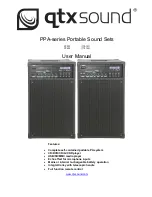
14-52
Cisco Security Appliance Command Line Configuration Guide
OL-12172-03
Chapter 14 Configuring Failover
Remote Command Execution
To send a command to a failover peer, perform the following steps:
Step 1
If you are in multiple context mode, use the
changeto
command to change to the context you want to
configure. You cannot change contexts on the failover peer with the
failover exec
command.
If you are in single context mode, skip to the next step.
Step 2
Use the following command to send commands to he specified failover unit:
hostname(config)#
failover exec {active | mate | standby}
Use the
active
or
standby
keyword to cause the command to be executed on the specified unit, even if
that unit is the current unit. Use the
mate
keyword to cause the command to be executed on the failover
peer.
Commands that cause a command mode change do not change the prompt for the current session. You
must use the
show failover exec
command to display the command mode the command is executed in.
See
Changing Command Modes, page 14-52
, for more information.
Changing Command Modes
The
failover exec
command maintains a command mode state that is separate from the command mode
of your terminal session. By default, the
failover exec
command mode starts in global configuration
mode for the specified device. You can change that command mode by sending the appropriate command
(such as the
interface
command) using the
failover exec
command. The session prompt does not change
when you change mode using
failover exec
.
For example, if you are logged-in to global configuration mode of the active unit of a failover pair, and
you use the
failover exec active
command to change to interface configuration mode, the terminal
prompt remains in global configuration mode, but commands entered using
failover exec
are entered in
interface configuration mode.
The following examples shows the difference between the terminal session mode and the
failover exec
command mode. In the example, the administrator changes the
failover exec
mode on the active unit to
interface configuration mode for the interface GigabitEthernet0/1. After that, all commands entered
using
failover exec active
are sent to interface configuration mode for interface GigabitEthernet0/1. The
administrator then uses failover exec active to assign an IP address to that interface. Although the prompt
indicates global configuration mode, the
failover exec active
mode is in interface configuration mode.
hostname(config)#
failover exec active interface GigabitEthernet0/1
hostname(config)#
failover exec active ip address 192.168.1.1 255.255.255.0 standby
192.168.1.2
hostname(config)#
router rip
hostname(config-router)#
Changing commands modes for your current session to the device does not affect the command mode
used by the
failover exec
command. For example, if you are in interface configuration mode on the
active unit, and you have not changed the
failover exec
command mode, the following command would
be executed in global configuration mode. The result would be that your session to the device remains
in interface configuration mode, while commands entered using
failover exec active
are sent to router
configuration mode for the specified routing process.
hostname(config-if)#
failover exec active router ospf 100
hostname(config-if)#
Summary of Contents for 500 Series
Page 38: ...Contents xxxviii Cisco Security Appliance Command Line Configuration Guide OL 12172 03 ...
Page 45: ...P A R T 1 Getting Started and General Information ...
Page 46: ......
Page 277: ...P A R T 2 Configuring the Firewall ...
Page 278: ......
Page 561: ...P A R T 3 Configuring VPN ...
Page 562: ......
Page 891: ...P A R T 4 System Administration ...
Page 892: ......
Page 975: ...P A R T 5 Reference ...
Page 976: ......
















































